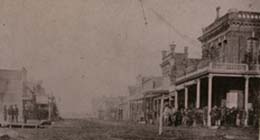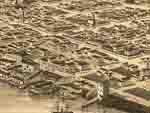
Victoria's Secret:
1859-1866
| The Dance Floor |
| Sexual History |
| Nightly Entertainment |
| Stakeholders |
| Local Halls |
| Original Sources |
| Citations |
| About Us |
| Dance Hall Facts |
|
Dance Halls or "Squaw dance halls," as they were often called in contemporary newspaper articles, were entertainment facilities established during the gold rush to keep miners in Victoria during the winter. Behind the dancing front, the real amusement was prostitution. Their popularity ended when the gold rush moved into the Cariboo and the opposition from the religious community overpowered dance house supporters. Explore the power forces involved in dance halls with a microhistorical approach to Victoria's history.
Question to consider: Who had the most influence in the dance hall operations?
People Involved:
|
| A Civilized Song of the Solomons | ||
|
"Sound the voice of exultation, Without form of introduction, |
||
